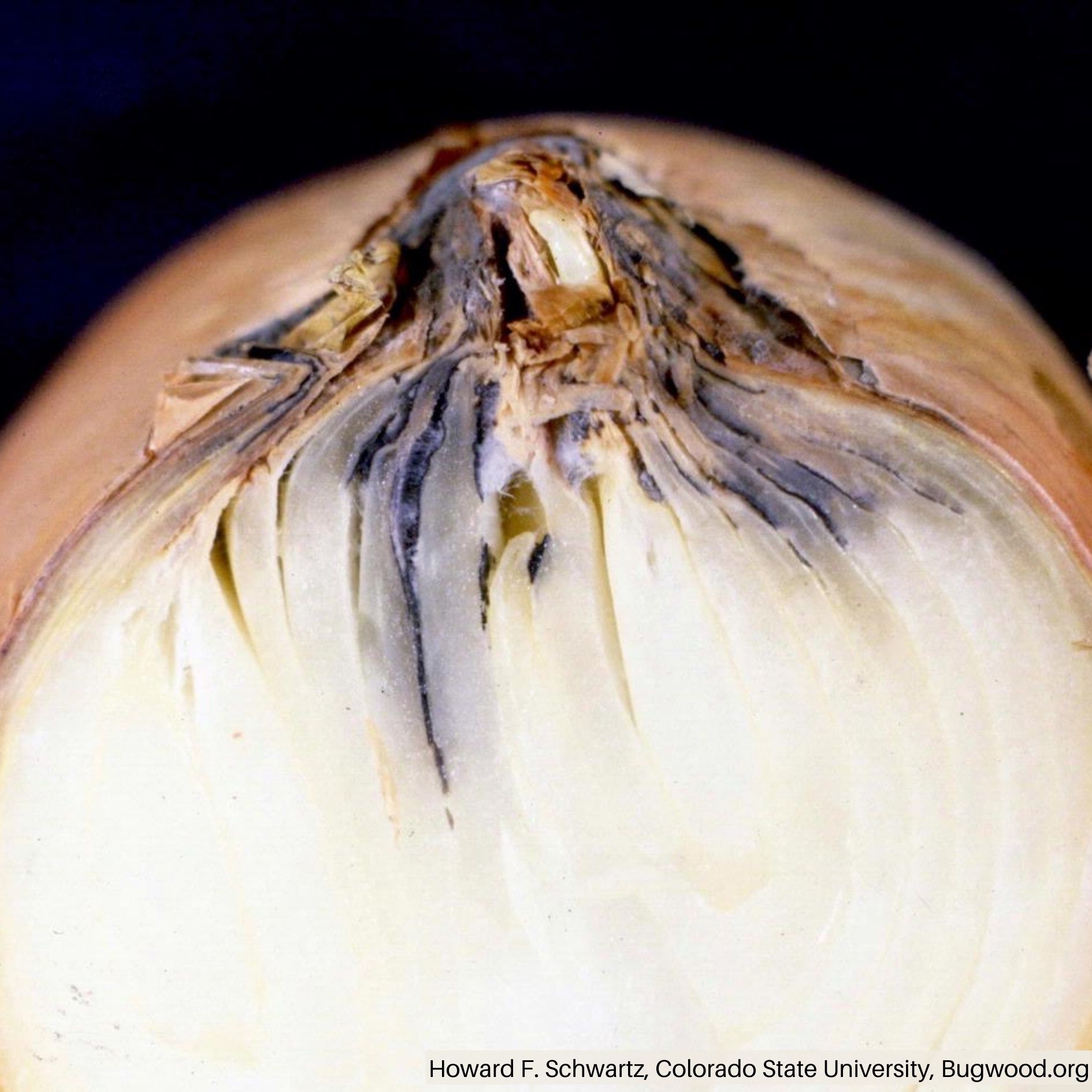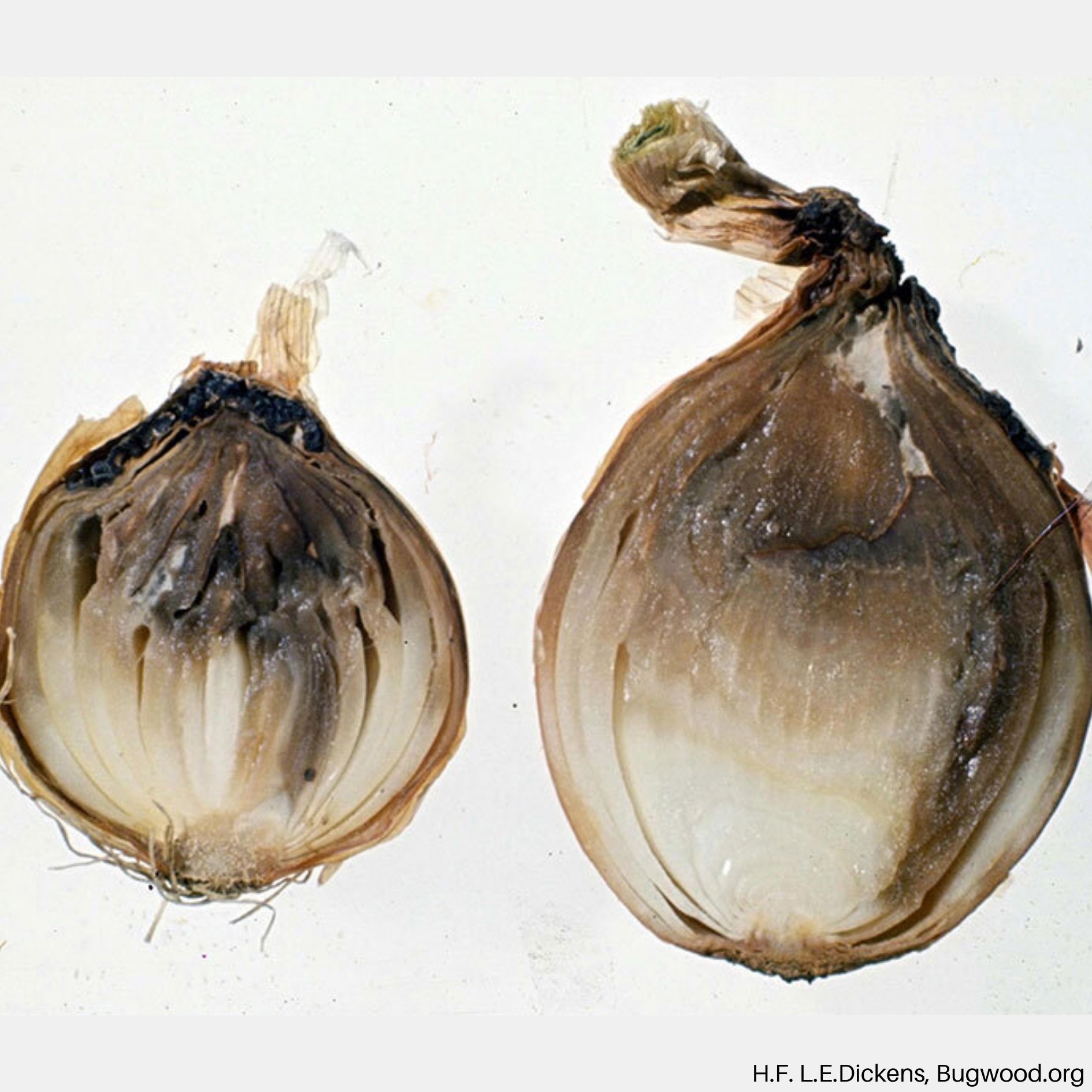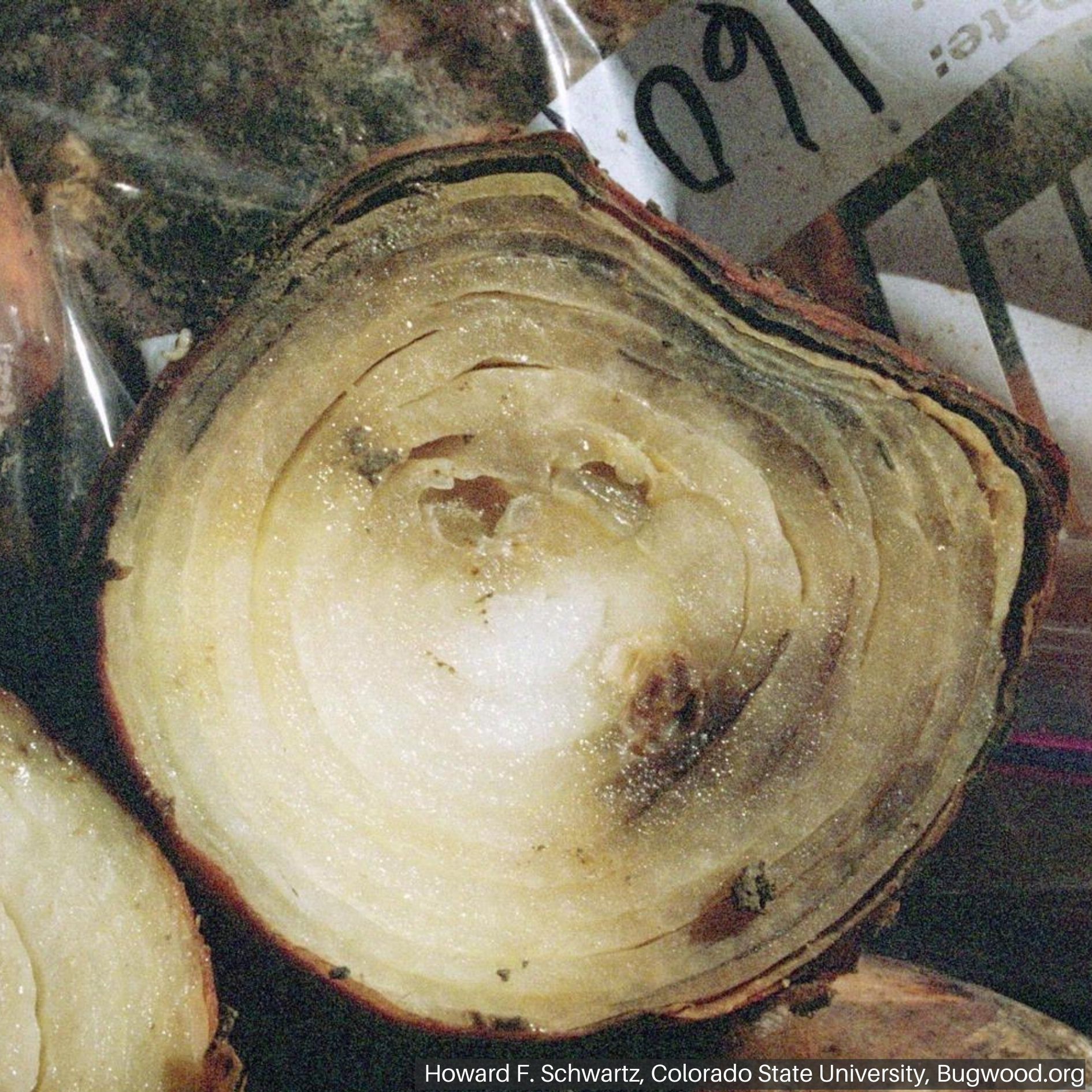Botrytis Neck Rot
 Botrytis Neck Rot
Botrytis Neck Rot Botrytis Neck Rot Symptoms
Botrytis Neck Rot Symptoms Severe damage from botrytis neck rot.
Severe damage from botrytis neck rot. Onion ruined by botrytis neck rot.
Onion ruined by botrytis neck rot.HOSTS
- Onion
DESCRIPTION
Botrytis neck rot is a post-harvest storage disease. However, infection occurs in the field but remains latent. The disease is found worldwide. Yield losses can range from 30% up to 100% in severe cases.
BIOLOGY
Botrytis aclada and B. allii are airborne, soilborne and seedborne. Sclerotia (fungal survival structures) can survives on onion debris in the soil for several years. Spores can be spread by wind and rain. Infection of leaf and neck tissue occurs during moist and warm conditions but no symptoms develop (latent infection). If the neck area is still moist during harvest, the fungus colonizes the tissue and then moves into the bulb. Symptoms in bulbs are visible after 4-8 weeks in storage.
SYMPTOMS
- No symptoms in the field
- In storage; discoloration of bulbs starting in the neck area
- Bulb rot
GENERAL MANAGEMENT
Curing onions by undercutting onions at maturity. All roots need to be severed. If it is wet during harvest artificial drying with forced, heated air (about 93°F) can be used followed by cool storage.
Precautionary Statement: Utah State University and its employees are not responsible for the use, misuse, or damage caused by application or misapplication of products or information mentioned in this document. All pesticides are labeled with ingredients, instructions, and risks, and not all are registered for edible crops. “Restricted use” pesticides may only be applied by a licensed applicator. The pesticide applicator is legally responsible for proper use. USU makes no endorsement of the products listed in this publication.

